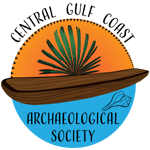
"The first written description of what may be tattooing in the Americas was reported by Columbus's crew members on his first voyages to the New World. Dr. Diego Alverez Chanca, a physician on Columbus's second voyage, noted in a letter, that the Caribbean Indians painted themselves with sharpened reeds. Oviedo, the first historian of Spanish Florida who wrote in the 16th century, asserted that tattooing was practised everywhere in New Spain using flint razors and pitch pine."
Marks of Identity: The Ethnobotany of Tattooing
The resurgence of interest in traditional tattooing, as well as concern about the safety of commercial inks, has led to a search for “natural,” “traditional,” products for tattoos. Scientific techniques for visualizing and analyzing ancient tattoos preserved on mummified human remains have been able to identify minerals and “pyrolized plant particles” (soot) in ancient tattoos, but not the plant taxa themselves.
Ethnographic studies of traditional tattooing have focused largely on tattoo motifs, meaning and tool technology, with less emphasis on the botanical materials involved. While it is true that “soot” from burned plant material is the most common tattoo pigment, a variety of other plants were traditionally used to produce tattoos by either injecting colors under the skin or via the activity of irritant chemicals that produced tattoo-like marks.
Indigenous peoples around the world have used a variety of plant substances to produce tattoos for therapeutic, decorative, commemorative or ritual reasons; the rarity of the tattooing plant itself sometimes also lent extra meaning and significance to the tattoo. This paper looks at tattooing plants cross-culturally, with a focus on Oceania and North America.
Check out this cool blog for some info on tattooing in Native cultures of the Southeast, then come on out to Weedon Island Preserve Cultural and Natural History Center on November 15th for Dr. Dixon's awesome talk.
This program is sponsored by the Central Gulf Coast Archaeological Society, and the Alliance for Weedon Island Archaeological Research and Education.


